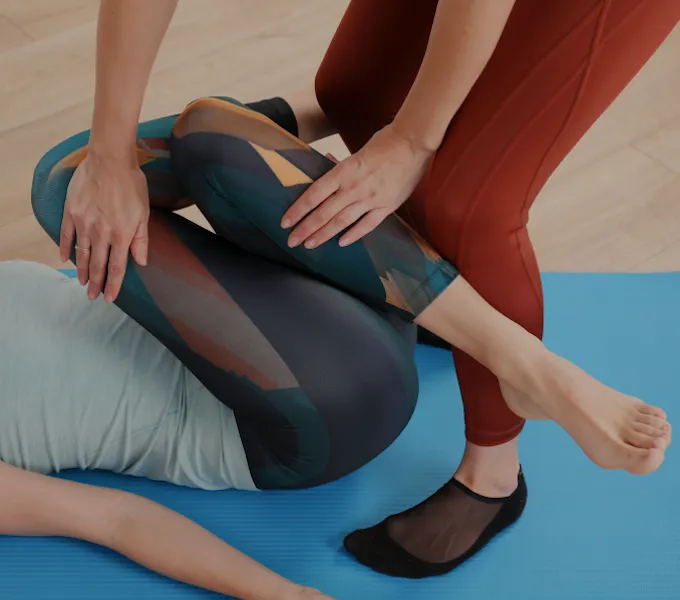
Splinting: The Constipation Hack You Didn't Know Existed
It’s so frustrating when you’re sitting on the toilet, trying to poop (possibly between meetings or while your toddler is busy tearing up the living room), but nothing is coming out — or worse, a poop is stuck halfway out. You can FEEL it just sitting there. All it needs to do is move another couple of inches, yet it won't... budge. Instead of pushing harder, which can lead to unwelcome issues like hemorrhoids, you can try splinting — a technique that pelvic floor physical therapists have been recommending for decades.
One small study that used MRI imaging to evaluate the effectiveness of splinting found that all of the women who used vaginal splinting were successful in moving some or all of the stool out of their rectum. Before you take this technique to the bathroom, read on for a helpful how-to, plus some advice on when to see your doctor or a pelvic floor physical therapist.
How to use vaginal splinting for constipation
What is splinting? Splinting involves inserting a finger into the vagina and gently pushing against the rectum to help move stuck stool down and out. There are a few forms of splinting, but here's a general how-to:
- Wash your hands (or use a surgical glove if you'd prefer and happen to have one).
- Insert a finger inside your vagina and place it on the back wall that borders the rectum. (You may feel a bulge created by the stuck stool.)
- As you bear down to poo, apply gentle pressure to this wall. This counter-pressure can help the stool to pass.

Other forms of splinting include pushing a few fingers against the outside of the perineal body (the skin and tissue between the vaginal and anal opening — see a helpful diagram here) or between the buttocks, usually just above the anus.
When to use vaginal splinting for constipation
Once it has reached your rectum, your poop makes it out by moving past the 'anorectal angle,' a little kink in your rectum created by your pelvic floor muscles. When all is working properly, this should be a quick and smooth journey, but poop can get stuck when:
- Your pelvic floor muscles aren't relaxing at the right time. If your pelvic floor muscles aren't working in coordination with your bowels (aka 'dyssynergic defecation') stool can get stuck above the anorectal angle. Splinting can be a gentle way to encourage or even trigger the pelvic floor to relax and let the stool through.
- You have a rectal prolapse. If your rectum doesn't have proper support from the pelvic floor, it can prolapse or drop down, pressing against the vaginal wall. This can create a curve or a pocket in the rectum where stool can get stuck. Vaginal or perineal splinting can push it into a better position.
- You've had a childbirth-related perineal injury. Because of all the swelling and tissue injury that's common after having a baby, those first couple of poops can be a challenge. Pushing your fingers against the perineal body helps support the healing tissues, helping to minimize pain — and the tendency to tense your muscles. Skip vaginal splinting in this case, as you want to avoid any kind of vaginal penetration for the first 6 weeks after a vaginal birth.
When to check with your healthcare team
A few words of caution: Splinting is a quick fix and not an effective treatment for chronic constipation. And if pushing on the vagina or perineal area is in any way painful, splinting is not a good option for you! Be sure to let your primary care provider or OBGYN know if you're frequently constipated. They can help determine the root cause and find the best solution for you.
If you or your healthcare provider thinks that your pelvic floor may be contributing to constipation — whether because the muscles that wrap around your anal opening are not able to fully relax to let stool out, or due to some other form of pelvic floor dysfunction — see a pelvic floor physical therapist. We can help you treat pelvic floor muscle dysfunction and keep your bowel movements moving.



